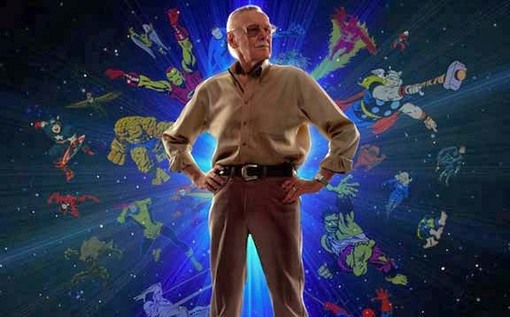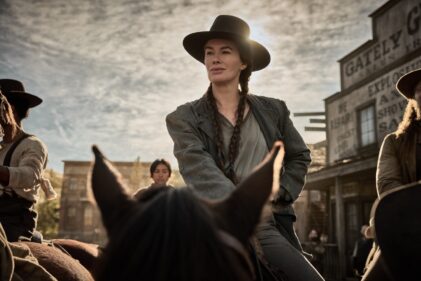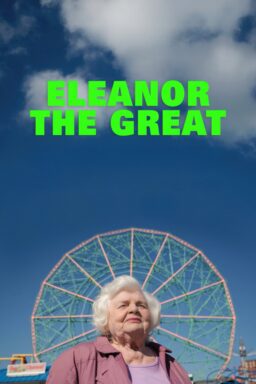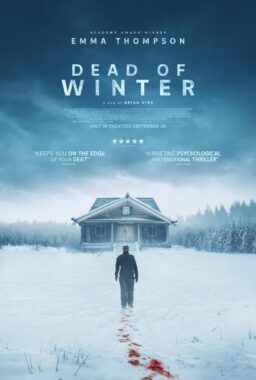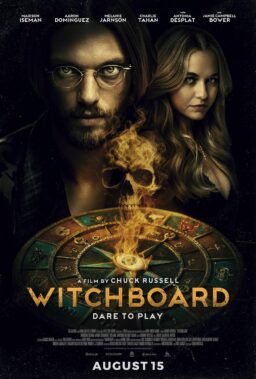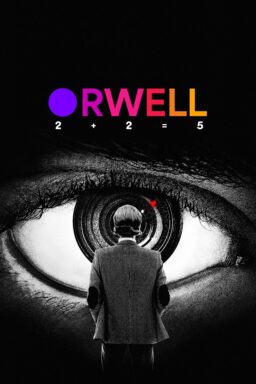“With Great Power: The Stan Lee Story” is available on-demand at Netflix.com, Amazon.com, iTunes, EpixHD.com and Vudu.com. Stan Lee will be attending a special screening of “With Great Power” at the Stan Lee Comikaze Expo in Los Angeles on September 15, 2012.
By Jana Spider-Woman Hulk Daredevil Wonder Woman Beast Monji
The title, “With Great Power: The Stan Lee Story,” is a tip off, but if the only Uncle Ben you know is a nattily dressed black gentleman who sells conveniently packaged rice, then Stan Lee wants to invite you to his Marvel universe. This is the world where Uncle Ben adopted his orphaned nephew who would be bitten by a radioactive spider in high school. That sullen, selfish teen would soon find that the bite of karma can be transformational and he becomes a super hero with an attitude: Spider-Man.
Growing up, I read Spider-Man. Like Peter Parker I eventually did a bit of photography for a newspaper. I didn’t live in New York, but in the biggest city on the left coast. I’ve flown through the air in Spandex although I can’t climb on walls. Spider-Man spoke to me in a way that the skimpily clad female superheroes did not.

According to “With Great Power,” Stan Lee is Spider-Man. While some might contest that point, there’s no arguing that Stan Lee is a major celebrity to comic book fans. He co-created the Hulk, X-Men, Spider-Man, Thor, Iron Man and the Fantastic Four and is now basking in the glory of his creations becoming the subject of blockbuster movies. “With Great Power: The Stan Lee Story,” is a loving tribute to the now 89-year-old writer, editor, publisher and, more recently, actor.
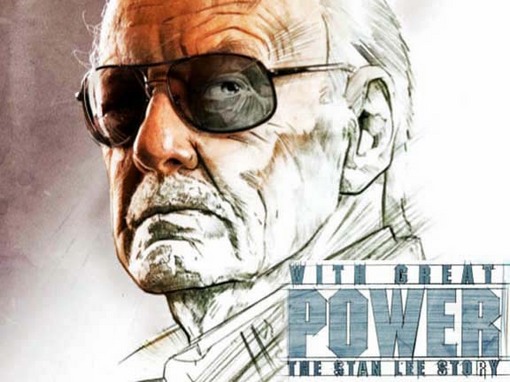
Directors Terry Douglas, Nikki Frakes and William Lawrence Hess (Frakes and Hess are credited as writers) together don’t have but two directorial credits in IMDB beyond this movie. Hess directed and wrote the 2003 “Bill the Intern,” while Douglas directed something called “Xtreme Sommer” in 2009 and served as a producer on “Bill the Intern.” One suspects that what these three lacked in directorial experience, they made up in enthusiasm and despite some false steps, they’ve assembled an impressive array of past and recent interviews with Lee and his former Lee colleagues, comic book historians and experts, actors, directors, writers, archival footage, old photos and references to make a portrait of a man who “was at the bottom rung of the creative totem pole” only to become the “overnight success” that he is today.
In the Douglas, Frakes and Hess universe, 1961 is the year that John Kennedy became president, Alan Shepard became the first American in space, the bikini was born and Marvel Comics published the first “Fantastic Four.” (That’s actually from a clip of Hugh Downs on ABC’s “20/20.”) And Marvel Comics is the “greatest revolution in literature on campus since the fold out nude” according to the University of California’s now-defunct humor publication, “California Pelican.” These popular culture quips are catchy but not always particularly useful, such as the brief inclusion of Paris Hilton proclaiming that Stan Lee is hot.

“With Great Power” refers to the last line in the first Spider-Man comic book (“Amazing Fantasy #15, August 1962). In that origin story, Peter Parker has decided to use his superpowers to earn money as a masked wrestler and as a TV star, and when a security guard yells at him to stop a thief, he doesn’t bother. It’s not his job. The thief later kills his Uncle Ben, and Spider-Man realizes in his guilt that his mission to protect the innocent. “With great power comes great responsibility” is part of the narration, not spoken by any character. In later iterations, Uncle Ben would speak that line, but Spider-Man isn’t the first character that Lee helped create. And he didn’t set out to be a comic book writer.
Born in 1922 as Stanley Martin Lieber, his family was poor and his father often out of work. As a result, Lee worked odd jobs as a teenager. The young Lieber wanted to be an actor — his first hero was Errol Flynn. He fell into writing comic books after becoming the go-fer office boy for a comic book publisher, Timely Comics, in 1939, where he met artist Jack Kirby and editor Joe Simon.
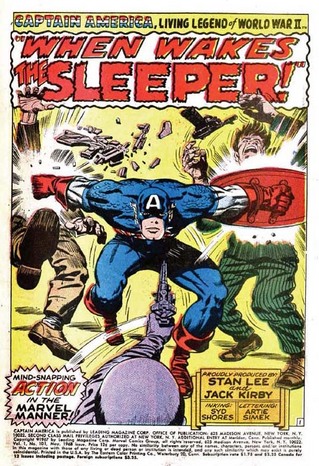
In 1941, under his new pseudonym Stan Lee (he was saving his real name for the great American novel he meant to write), he helped shape Captain America’s persona, in his first writing credit with a text-filler which added the now-signature shield toss. Captain America would continue on to battle the dastardly Nazis and Japanese Imperialists. As one interviewee comments, who could be better villains than the Nazis? “We were living our mythology; we were living our folklore” and Lee was there creating it, becoming the interim editor when Simon and Kirby left until, carried away with patriotism, he joined the Army.
Lumped into a group of nine “playwrights” that included such men William Saroyan (1939 Pulitzer Prize for Drama), Carl Laemmle Jr. (producer of the 1930 “All Quiet on the Western Front”), Frank Capra (director of the 1934 “It Happened One Night”) and Theodore Geisel (Dr. Seuss), he wrote training films and STD prevention brochures. After the war, he met and married another man’s war bride, Joan Lee in 1946. They’ve remained married and have one daughter. Lee credits much of his success to his wife’s encouragement that brought about the publication of first Fantastic Four comic book — and her spending debt pushed him to earn more. If you’ve seen the documentary, “Jack Kirby: Storyteller,” which was an added feature to the extended version of the original “Fantastic Four” movie, there’s a stark contrast between the families of Kirby and Lee.

This documentary also gives us a brief historical lesson on comic books. After the war, there was an attempt to sanitize comic books under the Comics Code Authority which was formed in 1954 in reaction to comic book burning protests in some cities and even attempts to ban crime and horror comics in places such as Oklahoma City and Los Angeles. Psychiatrist Fredric Wertham had published a book that year that claimed comic books caused bad behavior in children (and even illnesses like asthma), and he testifed before the Senate Subcommittee on Juvenile Delinquency. The CCA banned graphic depiction of violence and sexual innuendo. The code led to stories and characters that were flat and insipid. Can teens today imagine comic books and graphic novels without vampires, zombies and werewolves? Yes, some of us might wish for a world without “Twilight,” but what about Buffy?

Trapped in a job that was a source of embarrassment (he often would only say he was a writer and not what he wrote) and writing work that was killing his creative energy and losing money for the company, at his wife’s suggestion Lee took a chance and wrote the kind of story he wanted, the first Fantastic Four. His superheroes had angst; they had arguments and they had financial problems. Eventually his heroes would deal with common every day social problems from dating missteps larger societal issues of drugs, race and non-conformity. The characters Lee and his associates were complex and suddenly superheroes were not just a fashion show. The personalities of the men and women behind the masks and mutations pulled in readers.
Spider-Man was created by Lee with Steve Ditko in 1962 after Lee rejected Kirby’s conceptualization. Lee would create the X-Men with Kirby in 1963 (and Silver Surfer in 1966) but Spider-Man would become Marvel’s flagship character. The documentary does emphasize that Lee wasn’t the only person creating these characters, but doesn’t look at the acrimony and controversies. It does suggest that one of the reasons Stan Lee became more well-known than his co-creators is his flare for showmanship with his silent movie approach to illustrations, his tendency to jump on top of his desk during story writing sessions and his otherwise outgoing personality. The documentary on Kirby portrays him as a workaholic who confined himself for hours to his cave-like office although he had time to talk to almost anyone who looked him up.
On the way to popularizing his comic book heroes, Lee moved his family to Southern California, going Hollywood, but not all those ventures were successful and there was an unfortunate financial scandal along the way. In 1967, Spider-Man became the subject of an ABC animated series for three years. CBS tried a live-action series, “The Amazing Spider-Man” starring Nicholas Hammond (Friedrich von Trapp in “The Sound of Music”) which Lee felt lost the heart of what made Spider-Man interesting.

This 2010 documentary covers some but not all of the multimedia versions, notably including Tobey Maguire (2002 “Spider-Man,” 2004 “Spider-Man 2” and the 2007 “Spider-Man 3“) but not the troubled and expensive Broadway musical “Spider-Man: Turn Off the Dark” which began previews at the end of November 2010 and opened in June 2011. But that omission is easily explained: The premiere of this 80-minute documentary was in July 2010 at the Comic-Con International Independent Film Festival in San Diego. Of course, this means that the 2012 Spider-Man reboot with Andrew Garfield, the Ultimate Comics Miles Morales’s black and Latino version of the web-slinger, and the recent legal action by Jack Kirby’s estate against Marvel aren’t included either. Nor are the grumblings that accompanied the recent movie, “The Avengers.”

The documentary does reference the financial scandal around Stan Lee Media that Lee co-founded in 1998 but that filed for bankruptcy in 2000. The co-founder Peter Paul and corporate officer Stephan Gordon were charged with securities fraud. That major setback didn’t stop Lee, who then co-founded POW! Media in 2001. The lawsuits that involved both SLM and POW! were numerous with some only concluding this year. The directors don’t bog us down with the legal proceedings. What we do see is that Lee became a celebrity and an actor within the universe that he created. The documentary shows various clips from the small bits Lee had in several movies.

The directors Douglas, Frakes and Hess provide us with some insight to Lee’s motivations and life. There’s a particularly touching segment in which he and his wife talk about their second daughter, who died soon after birth, and the obstacles they faced when they subsequently wanted to adopt a child. At the time, adoptions into a mixed marriage (he was Jewish; she was Episcopalian) weren’t allowed. We’re left to consider how that colored his X-Men. While we see and hear from his wife, his younger brother, Larry Lieber, appears only briefly.
It wasn’t just personal experience that influenced the comic book characters. Lee early on understood how important fans were and reached out to them in many ways. At first, he created a special club. Later, Lee’s attention and outreach to college students brought out the peace and love aspects of the Silver Surfer according to the documentary.

“With Great Power” contrasts with another more recent Comic-Con biographical documentary: “Adventures in Plymptoons!” Bill Plympton is a different type of X man, who followed his own muse in a manner that probably would have been the CCA’s worst nightmare — wallowing in the gutter of toilet humor and sexual innuendo with a surrealistic twist. From Alexia Anastasio’s documentary of Plympton, you get the impression of insularity and a snickering schoolboy humor without a greater purpose — either moral or commercial. Stan Lee is a populist while Bill Plympton is an individualist.
At this stage of his life, there seems to be so much that Stan Lee wants to do while he still has time. In that respect, he reminds me of another geek hero, William Shatner. From being embarrassed about the source of their fame to embracing it and being recognized worldwide as a result, both men seem driven to work by the ticking of Father Time and their experiences of poverty.

Shatner’s “The Captains” looks at how various Star Trek captains served as vehicles for change. His more recent “Get a Life!” looks at the fans and how Star Trek has helped them become a family and overcome adversity. His next documentary will focus on “The Next Generation.” With his position and power as the original Star Trek series captain, Shatner seems to be assuming the role of “Star Trek” historian.
Lee, on the other hand, used his power, in a way similar to Gene Roddenberry, to integrate social issues into his comic books, from teen angst and common, everyday social anxieties of Spider-Man; to the financial problems of managing a company with the Fantastic Four; to the anti-war attitudes of Silver Surfer; and the rise of Black Power with Black Panther and Falcon.
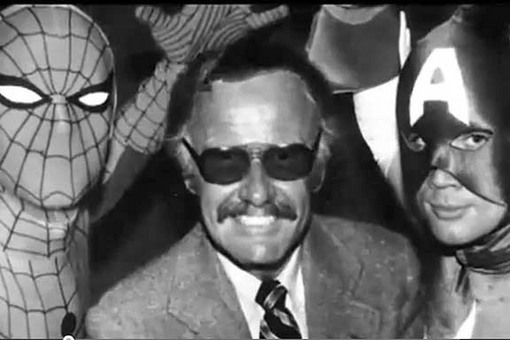
Both men have diversified and embraced new technology; they project larger than life characters. They are their own brand and they seem to be ever optimistic with unending ambition and enthusiasm for their next project. In this respect, Stan Lee and William Shatner have provided their fans with a road map for life filled with endless possibilities and attendant responsibilities. Who wouldn’t want to enter a room and feel the love of thousands? Maybe neither has created the Great American Novel or brought us world peace, but they have addressed the issues of the times with warmth and humor. I no longer want to grow up and be like Spider-Man, but when I grow old, I want to be like Stan Lee or William Shatner — on the go and getting ready for the next project, working, reaching out and excited about the future. Perhaps we should consider these two AARP superheroes.


